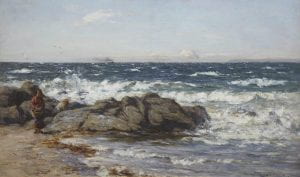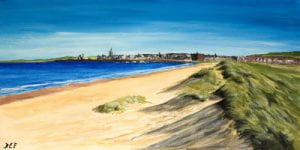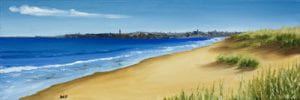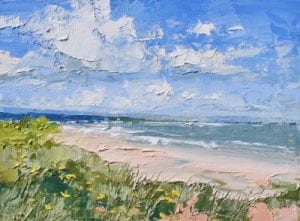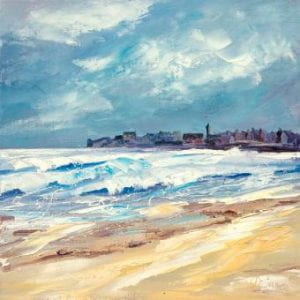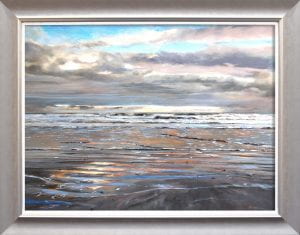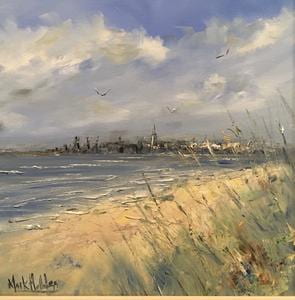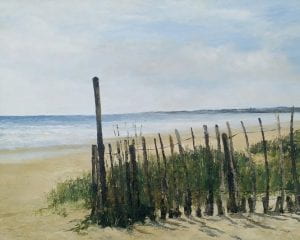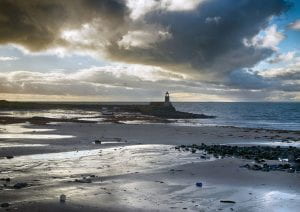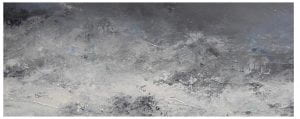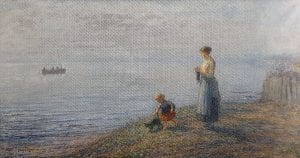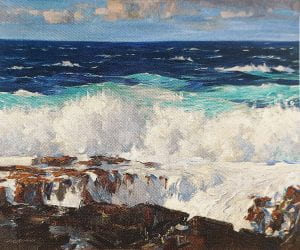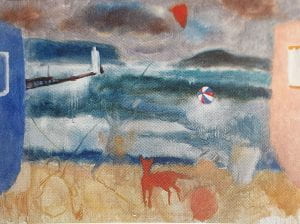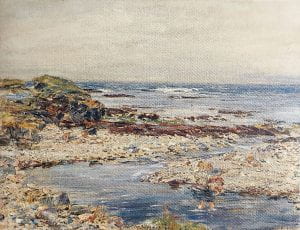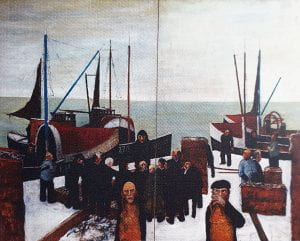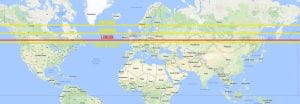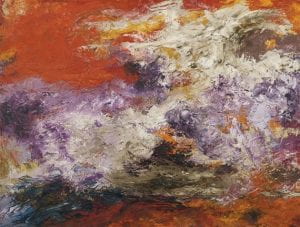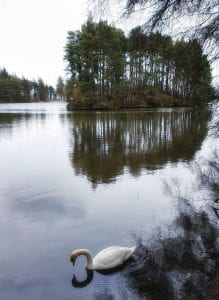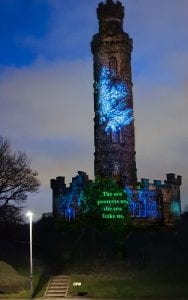When painting the sea, George Reid (1841-1913) habitually positioned his viewer a hundred metres or so away from the water rather than on the foreshore. This enabled him to include elements that would define the space as a specific place.
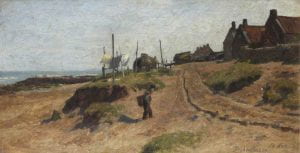
The picture’s dimensions extend the central character’s trudge from sea to home. Its sombre colours contribute to an atmosphere of weariness and rough life lived, which is compounded by the repetitive shapes; the three cottages, the clumps of shadowed hard turf, the jumbled upright poles. It has many narrative elements. The figure, stepping wearily uphill, is bent over to carry a heavy basket. He walks away from the sea , perhaps away from a hard day’s work, towards the darkly shadowed cottages. The rutted unsurfaced road and the isolated flapping clothes on a makeshift line suggest that these homes are poorly serviced. The title is precise, stamping the artist’s portrayal with a specific place and time. We know where Reid painted most of his landscapes and seascapes because the titles are almost always specific. He defined a place.
From this example, we can extract some seminal elements of a definition of a painter’s place.
Firstly, place is delineated by spatial elements such as topography. In Reid’s picture, the topography is an identifier but also a metaphor. Its features define the place but are also drawn in such a way that they echo the narrative. For example, the uphill gradient from beach to cottages likely corresponds to reality, but it can also represent the figure’s uphill struggle in life. Its slope is mirrored by the land horizon that bisects the picture, whilst also connecting the two areas of central interest in this figure’s world, work and home.
Secondly, place is defined by the physical environment, part of which is stable like the hill and the sea, and part of which is not, like the weather. The social environment is also significant, represented by elements like buildings, objects and active figures, and also by reminders of esoteric things like home and work. Viewers are reminded of their own spatial experiences in the environment, of trudging up a hill.
Thirdly, a definition of place also carries a temporal meaning, which may or may not be explicit. Kevin Lynch expresses the idea more starkly by asking the question, what time is this place? Reid answers the question by including a calendar date in his title, and also with the clothing that the figure wears, the cart tracks in the mud and so on.
Finally, a definition of place implies that the person invests their physical environment with emotional attachment. This can take many forms and may often be so complex that it is difficult to research. There has recently been an increase in scholarly interest in researching the concept of genus loci, the spirit of a place. Reid has somehow communicated the atmosphere of early Victorian Buchanhaven village.
